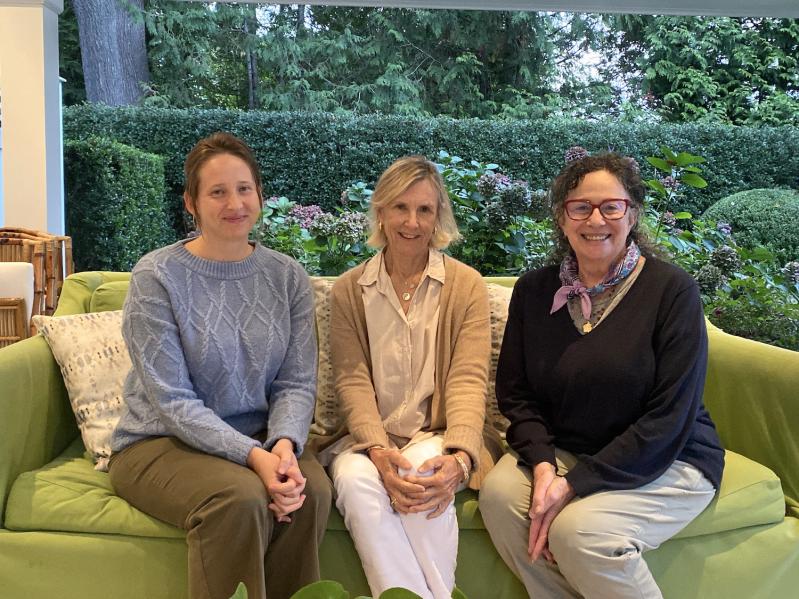In the green and lush backyard of a house in East Hampton Village, around 15 practitioners of Transcendental Meditation gathered on Monday evening. For 20 minutes, each sat, silently repeating a mantra, the sound given privately by a certified teacher of the practice.
The sound itself has no associated meaning, but rather is chosen to align with the individual to help the mind settle effortlessly, to facilitate a shift from the surface of the mind to a state of inner peace and pure consciousness.
The Transcendental Meditation, or TM, movement was founded and led by Maharishi Mahesh Yogi, a spiritual teacher born in India in the early 20th century. He, in turn, had learned the technique from Brahmananda Saraswati, commonly known as Guru Dev (“divine teacher”).
Independent of any religion, Maharishi presented the technique as a natural and effortless practice to promote mental and physical wellness, a scientific approach to consciousness. He initiated thousands of practitioners, and later developed a teacher training program. Beginning in the 1950s, he traveled the world to introduce people to the technique. Through their own spiritual exploration, the Beatles, who studied the practice with Maharishi at his ashram in India in 1968, further popularized TM around the world.
Today, in addition to its many practitioners, the movement is manifested in the United States in Maharishi International University in Fairfield, Iowa, and in the Natural Law Party, a onetime political party that ran a presidential candidate, the quantum physicist and educator John Hagelin, in presidential elections in 1992, 1996, and 2000 and has since given way to the U.S. Peace Government, an organization founded and led by Dr. Hagelin.
The David Lynch Foundation for Consciousness-Based Education and World Peace, named for the late film director and TM practitioner, funds the teaching of TM in schools and to at-risk groups, including the homeless, war refugees, prison inmates, and military veterans. Studies have concluded that TM reduces post-traumatic stress disorder in veterans while enhancing mindfulness and quality of life, and during the Covid-19 pandemic the David Lynch Foundation’s “Heal the Healers” initiative similarly reduced stress and anxiety among medical professionals.
In a world filled with stress, an emotion, and anxiety, a physical state of being, many people have turned to TM and other forms of meditation to reduce those maladies, its advocates long asserting both mental and physical health benefits.
In August, the American Heart Association published its 2025 High Blood Pressure Guideline for clinicians diagnosing and managing adults with high blood pressure, which incorporates updated recommendations based on the latest clinical evidence. “There is consistent moderate to high-level evidence from short-term clinical trials that Transcendental Meditation can lower [blood pressure] in patients without and with hypertension,” according to the guideline.
Monday’s group meditation was led by Kim Tiernan, who has been practicing and teaching TM for some 50 years. She was joined by Cathy Rowe, who has a similarly extensive background as a TM teacher and practitioner, and Aimee Hodierne, who learned the technique more recently and, like Ms. Tiernan and Ms. Rowe, is a certified teacher.
Ms. Rowe came to TM as a University of Rhode Island student, after a fellow student told her of an upcoming lecture on meditation. “I thought it sounded interesting,” she said, “because what I heard from them was that it was a way to develop your full potential. That struck me, as a 20-year-old. As I was a young person learning, and before I went out into the world, using more of my potential sounded like a good idea. Within one semester, I was on the dean’s list every semester after that. Prior to that, I had been struggling in school most of my life. So I really did begin to use more of my potential.” TM, Ms. Hodierne said, “is an effortless meditation that uses the natural tendency of the mind.” That tendency “is to settle down and move toward that which is more charming, more fulfilling.” The mantra, she said, is the vehicle that allows the mind to look within and experience a calmer and more pleasant state.
On Monday, members of the group, seated in a large circle, closed their eyes for the 20-minute meditation, silently repeating their individual mantras. A brief discussion followed, after which Ms. Tiernan played a short video depicting the Dhammajarinee Witthaya School in Thailand, for girls from poor families or who are orphans or have suffered abuse, in which the principal explains that TM has helped the at-risk girls develop their consciousness. “Back home, I was a hot-tempered person,” says one student, “but since I learned TM, I feel a lot calmer. I feel that I’m happier, my learning ability is better, and relationships are improved.”
Will Ryan, an Amagansett artist who attended Monday’s group meditation, reported similarly positive benefits from his own long-term, twice-daily TM practice. “Before I started meditating, I had a lot of stomach issues, and I was a prime candidate for an ulcer — both parents had had ulcers,” he said. “When I started meditation, I noticed that really changed, and it cleared up. I also think for me as an angry young kid, it really helped me dissolve a lot of that anger. . . . I think it’s very good for the nervous system.”
Told of the American Heart Association’s High Blood Pressure Guideline, Mr. Ryan said, “I can attest to that as well. I take my blood pressure, and it’s certainly lower after I meditate.”
Ms. Rowe and Ms. Hodierne are in the process of arranging public information sessions on TM in East Hampton Town.

